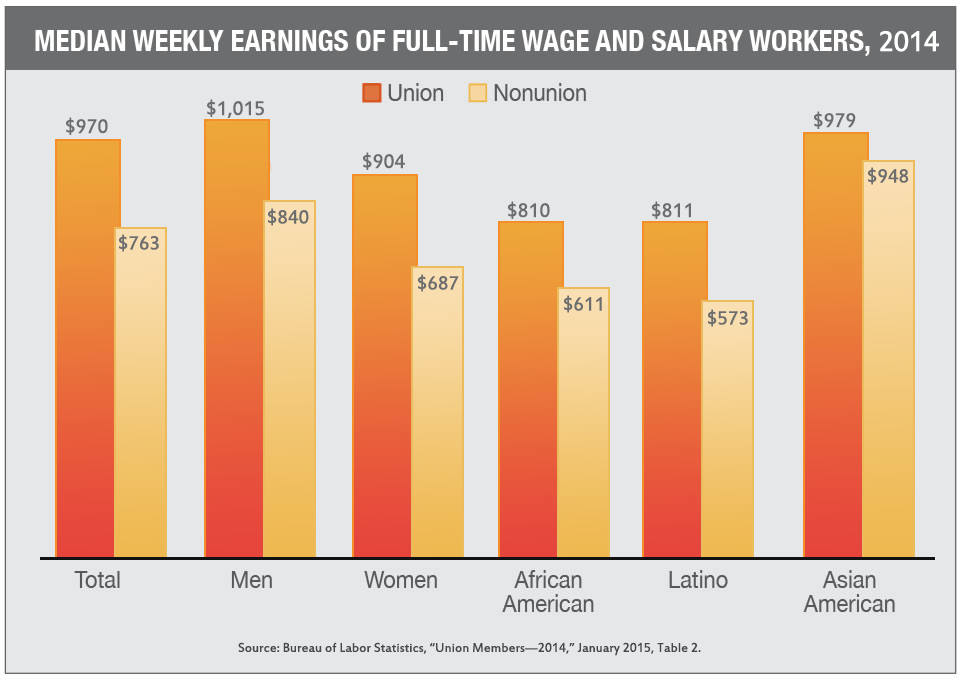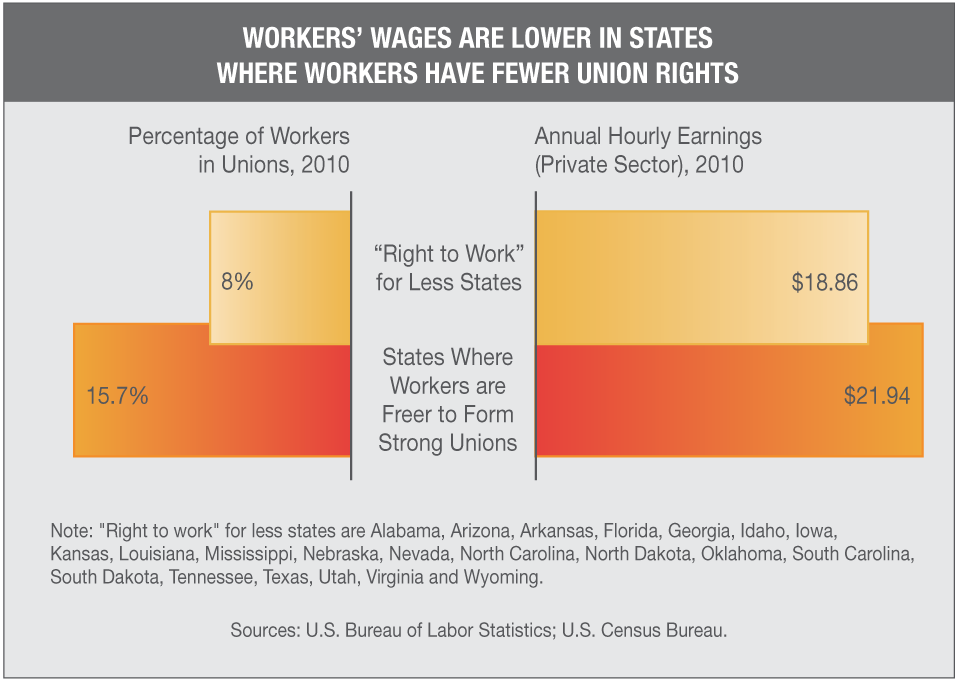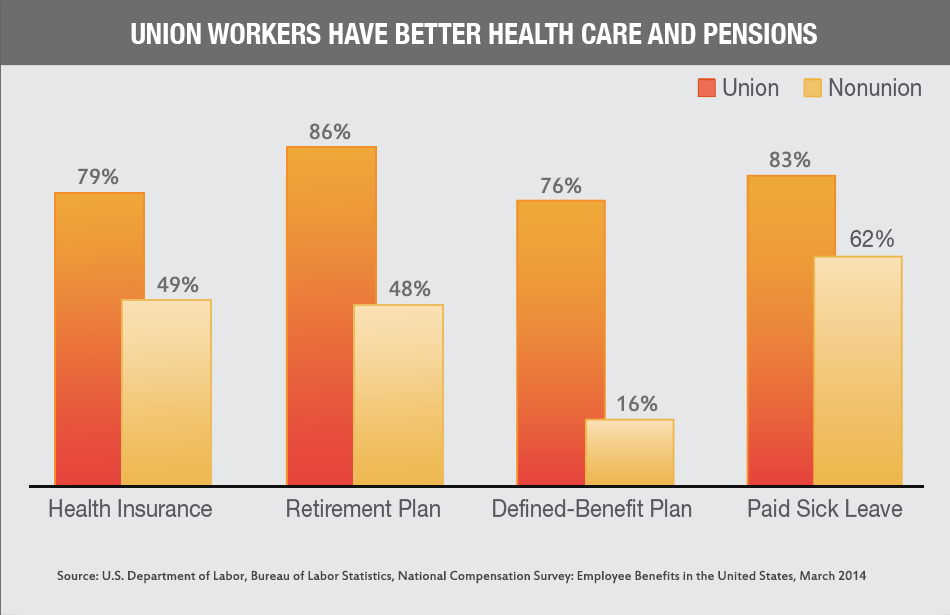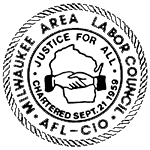Union members earn better wages and benefits than workers who aren’t union members. On average, union workers’ wages are 27 percent higher than their nonunion counterparts.
Unionized workers are 60 percent more likely to have employer-provided pensions.
More than 79 percent of union workers have jobs that provide health insurance benefits, but less than half of nonunion workers do. Unions help employers create a more stable, productive workforce—where workers have a say in improving their jobs.
Unions help bring workers out of poverty and into the middle class. In fact, in states where workers don’t have union rights, workers’ incomes are lower.
| Union workers participating in job-provided health insurance | 79% |
| Nonunion workers participating in job-provided health insurance | 49% |
| Union workers participating in guaranteed (defined-benefit) pension plans | 76% |
| Nonunion workers participating in guaranteed (defined-benefit) pension plans | 16% |
| Union workers with paid sick leave | 83% |
| Nonunion workers with paid sick leave | 62% |
| Union workers’ median weekly earnings | $970 |
| Nonunion workers’ median weekly earnings | $763 |
| Young (ages 16–24) union workers’ median weekly earnings | $602 |
| Young (ages 16–24) nonunion workers’ median weekly earnings | $470 |
| Union women’s median weekly earnings | $904 |
| Nonunion women’s median weekly earnings | $687 |
| African American union workers’ median weekly earnings | $810 |
| African American nonunion workers’ median weekly earnings | $611 |
| Latino union workers’ median weekly earnings | $811 |
| Latino nonunion workers’ median weekly earnings | $573 |
| Asian American union workers’ median weekly earnings | $979 |
| Asian American nonunion workers’ median weekly earnings | $948 |
| 1U.S. Department of Labor, Bureau of Labor Statistics, National Compensation Survey: | |
| Employee Benefits in the United States, March 2015. | |
| 2U.S. Department of Labor, Bureau of Labor Statistics, Union Members 2014, January 2015. |

























